A Monument to Malice Green Rises in Highland Park
One of the most high-profile police brutality cases in Detroit inspired a new piece of public art from painter Sydney G. James.
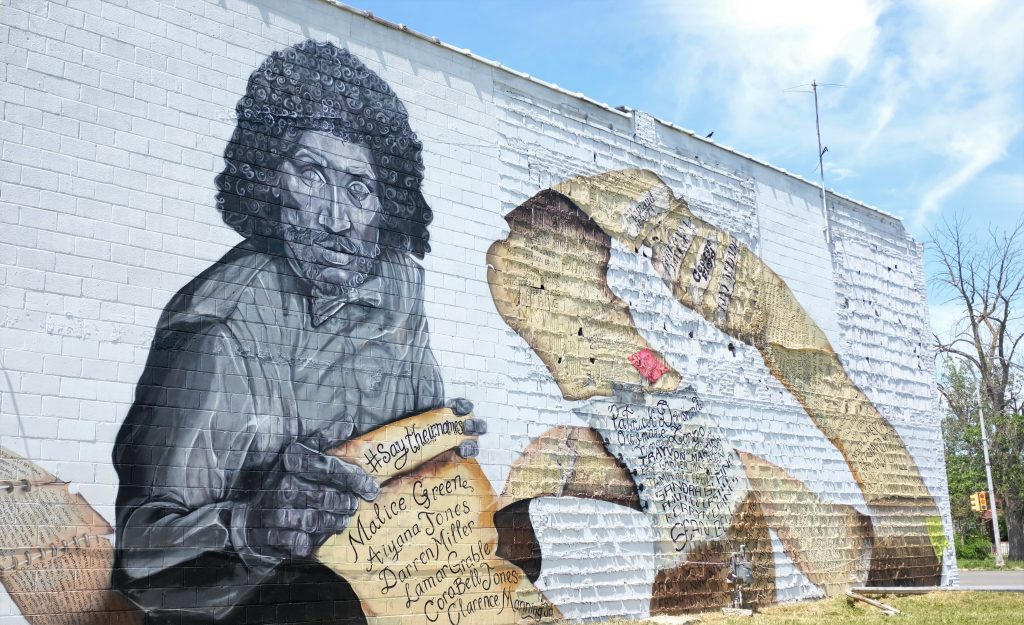
At the corner of Hamilton and Puritan Avenue in Highland Park, Sydney G. James is painting a 3,500-square-foot mural on the side of a former church-turned art gallery she owns with two other artists.
“It’s like Detroit will always remember my uncle.” — Kiersten Cheateum, niece
A mural this massive tends to create its own congregation of people curiously watching what’s happening. Occasionally, a car drives by and honks their horn in support. Friends drop by to offer cold drinks to James and her small crew of painters on a hot June day.
“Does it feel like a sculpture?” Asks James, hovering about 10-feet from the ground in a boom lift. “‘Cause I didn’t want it to feel like a damn black and white photo. That’s not what I was going for.”
Click on the player above to hear about Malice Green, his killing and the legacy he left.
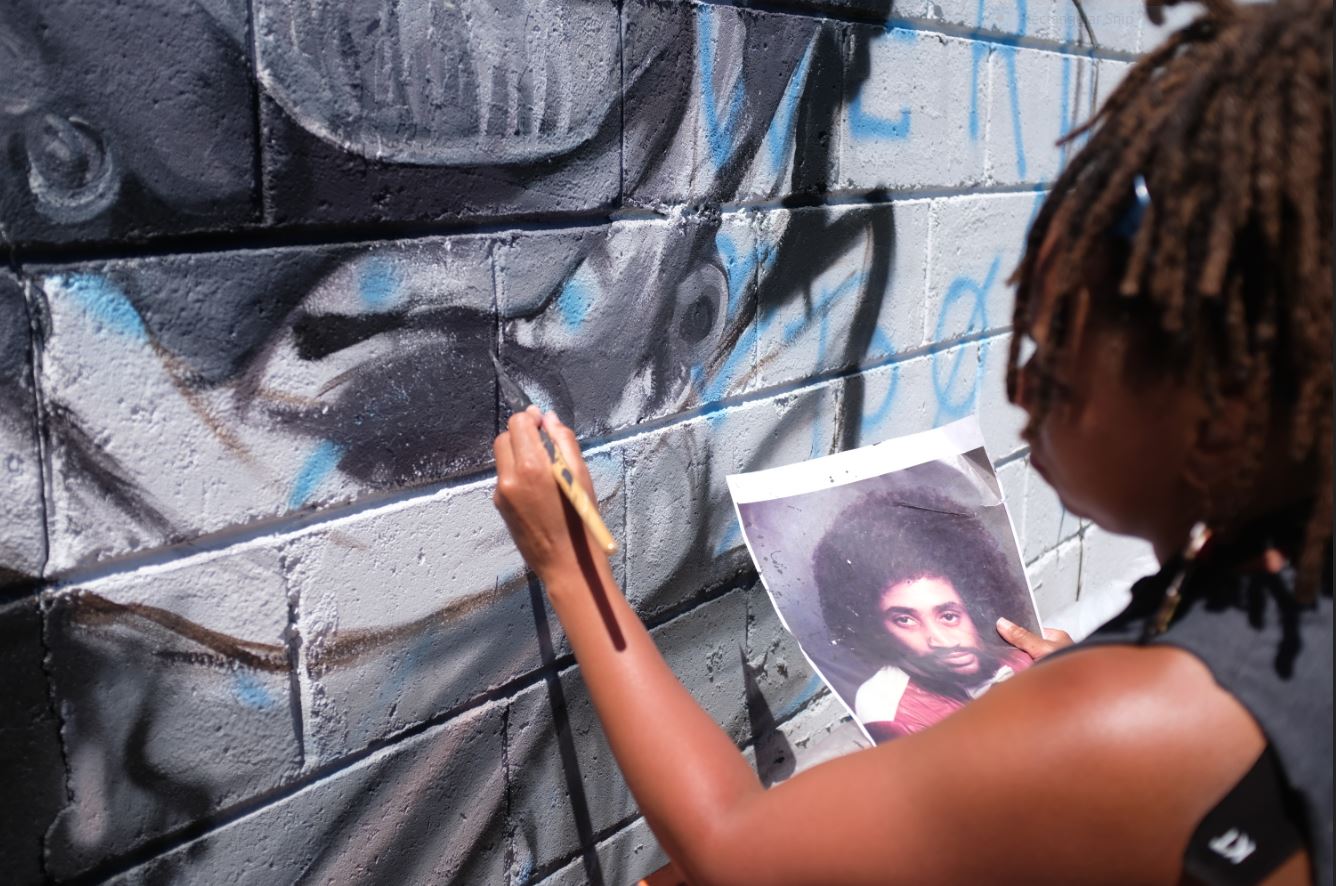
The mural James is painting is a portrait of Malice Green — a 35-year-old Black Detroiter who became the face of police brutality around the country on November 5th, 1992 when he was killed by two white Detroit police officers on the city’s west side.
The officers were in plainclothes and driving an unmarked car. Archival footage from WXYZ-TV Detroit says their nickname was “Starsky and Hutch,” named after the TV series about two detectives who play by their own rules to solve the case.
They pulled Green over because they suspected him of buying drugs.
The interaction ended with Green receiving at least 12 blows to the head from their steel flashlights because he refused to open his hand for officers to see what he was holding.
Green was dead by the time the ambulance arrived at Detroit Receiving Hospital.
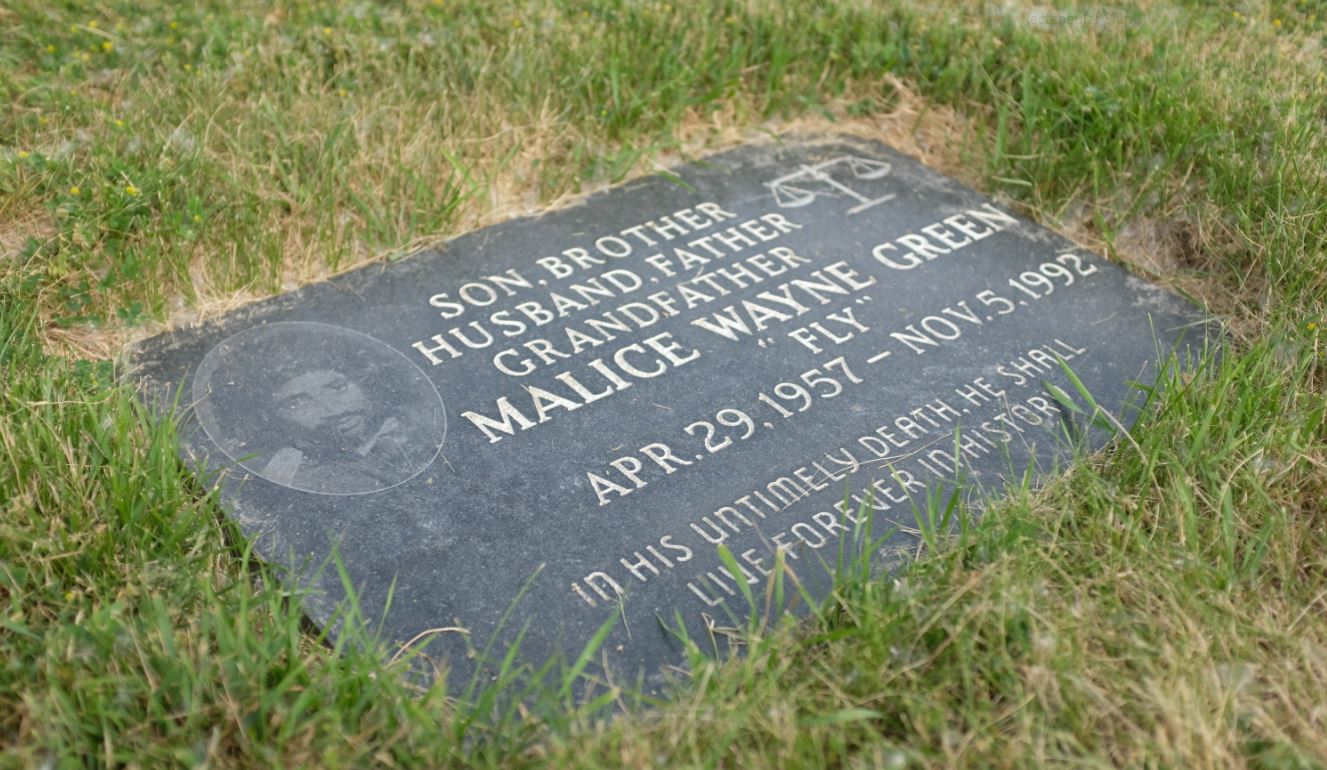
The killing sparked a national debate and protests in Detroit with city officials from the police chief to the mayor calling for swift action.
Several officers were involved in the Green case, but DPD officers Walter Budzyn and Larry Nevers received the brunt of the charges. Both were initially convicted of second-degree murder before a wave of appeals later reduced the charges to involuntary manslaughter.
A Symbol For Detroit
Budzyn was released in 1999. Two years later, Nevers was allowed to serve the rest of his sentence at home after being treated for lung cancer.
“They didn’t get what they deserved, but we did get a conviction,” says James, sitting on her porch in the city’s Conant Gardens neighborhood a few days before she’s set to start the mural.
James was 13-years-old when Green was killed. She’s now 40-years-old and one of the most acclaimed painters working in Detroit today.
“We’re tired. We’re over it. We’re tired. It stops here.” — Sydney James, painter
She says she remembers a memorial of Green painted not far from where he was killed. It was created by Bennie White Jr. Ethiopia Israel. He painted it five days after the killing in 1992. The abandoned party store it was on was demolished seven years ago, wiping out the memorial with it.
“That was really against what the community wanted,” says James. “They wanted it to stay up. It was a symbol — not only for that area but a symbol for Detroit and a symbol for Black people.”
When she found out the mural wasn’t around anymore, James said she was crushed.
“I decided the next day I’m going to paint a Malice Green mural,” says James.
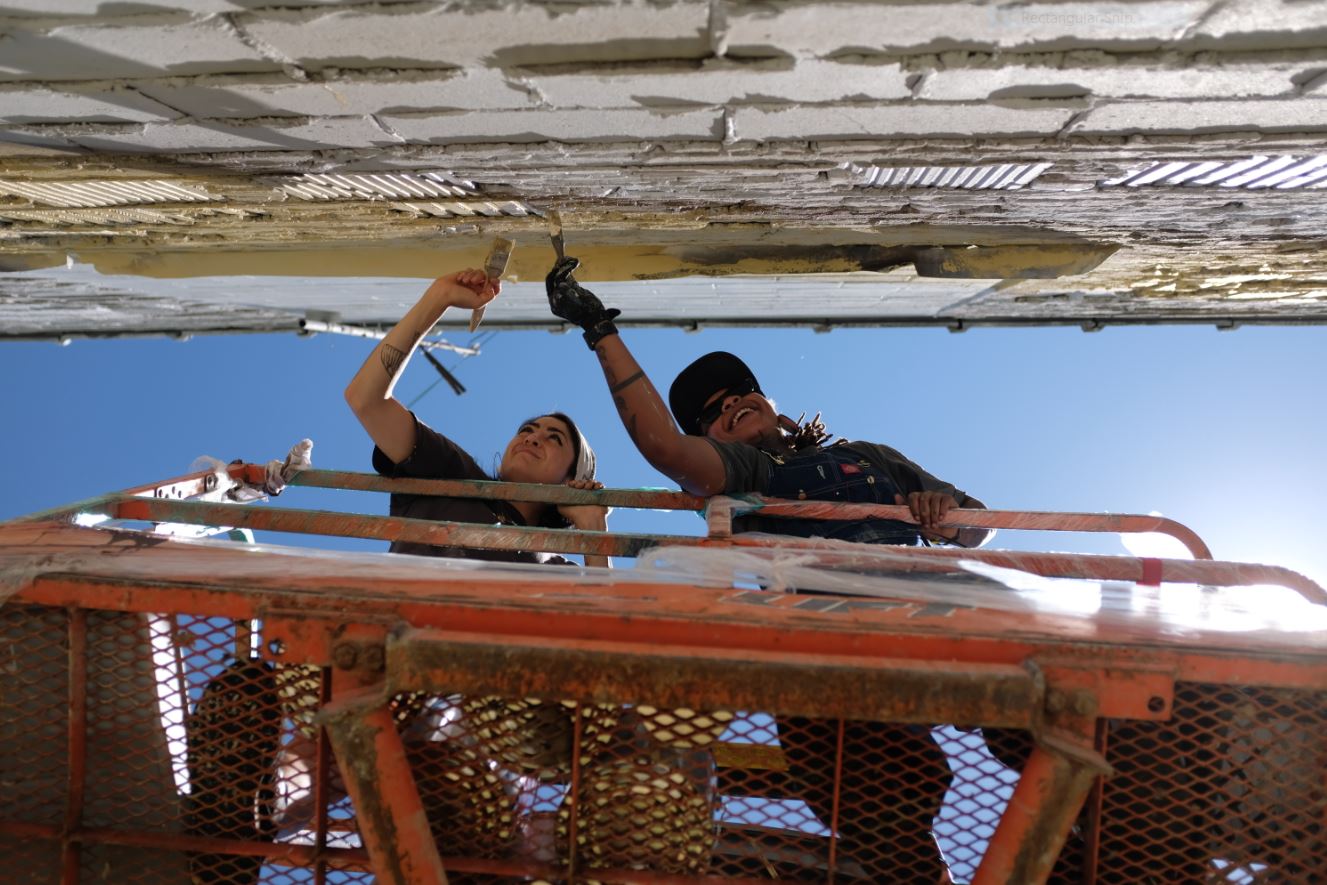
From there, things moved fast. She started a GoFundMe to raise money, asking for $10,000 for paint and boom lifts to reach the edges of the massive mural.
James didn’t want compensation for herself, but she did want to the pay the trio of queer-identifying artists she enlisted to help her — Bakpak Durden, Ijania Cortez and Cyrah Powers.
“I always knew that if you did wrong, God would punish you for it. I thought it was best to leave it in the Lord’s hands, ‘cause we are not the judge.” — Triese Cheateum, sister
The talent working on the wall is just as notable as the project itself. As the popularity of public art grows around the country, few queer or female-identifying muralists get as much work as their male counterparts do. James says she’s often the only Black female artist at the street art festivals she’s regularly invited to paint at.
In just 3 hours, James says she reached her GoFundMe Goal — and then quickly exceeded it, raising close to $19,000.
“I’m so grateful that we went over what I asked for,” says James, who donated $2,000 left over from the project to Black Youth Power 100, a national member-based organization of Black youth activists.
James and her team finished the mural in about a week. It’s a stunning monument to Green on the side of the Hamilton Tucker Gallery (James owns the gallery with fellow artists Bre’ann White and “King” Rayshard Tucker).
James depicts Green as if he was a sculpture, casting a piercing gaze down on any onlookers. She placed black tears below his eyes to honor Bennie White Jr.’s original memorial.
Green is depicted holding a massive, winding scroll with the names of victims of police killings written on it. James titled the mural “Way Too Many” as a nod to the myriad names on the list.
Aiyana Jones. Eric Garner. George Floyd.
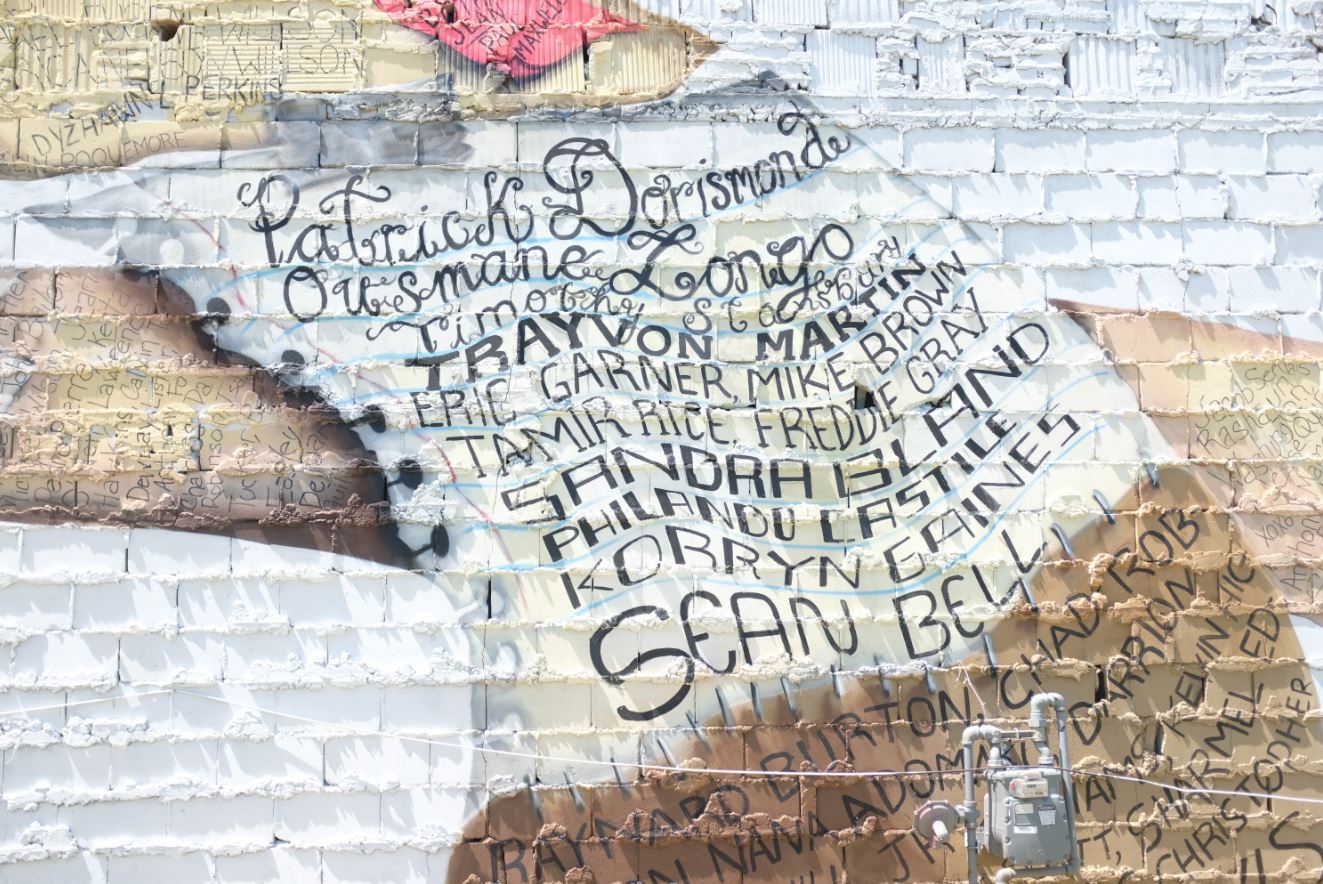
James says she was partially inspired to paint the mural so quickly as a response to the wave of protests against police brutality around the country.
But it was also a reaction to watching COVID-19 wreak havoc in her family and in her community.
“I feel like the danger of [COVID-19] made the police brutality more of an urgent situation,” says James. “We ain’t about to be out here attacked by invisible invaders and invaders we walk past and see every single day. We’re tired. We’re over it. We’re tired. It stops here.”
Twin Crises
In metro Detroit and other cities in the U.S., COVID-19 has disproportionately affected African-Americans and people of color.
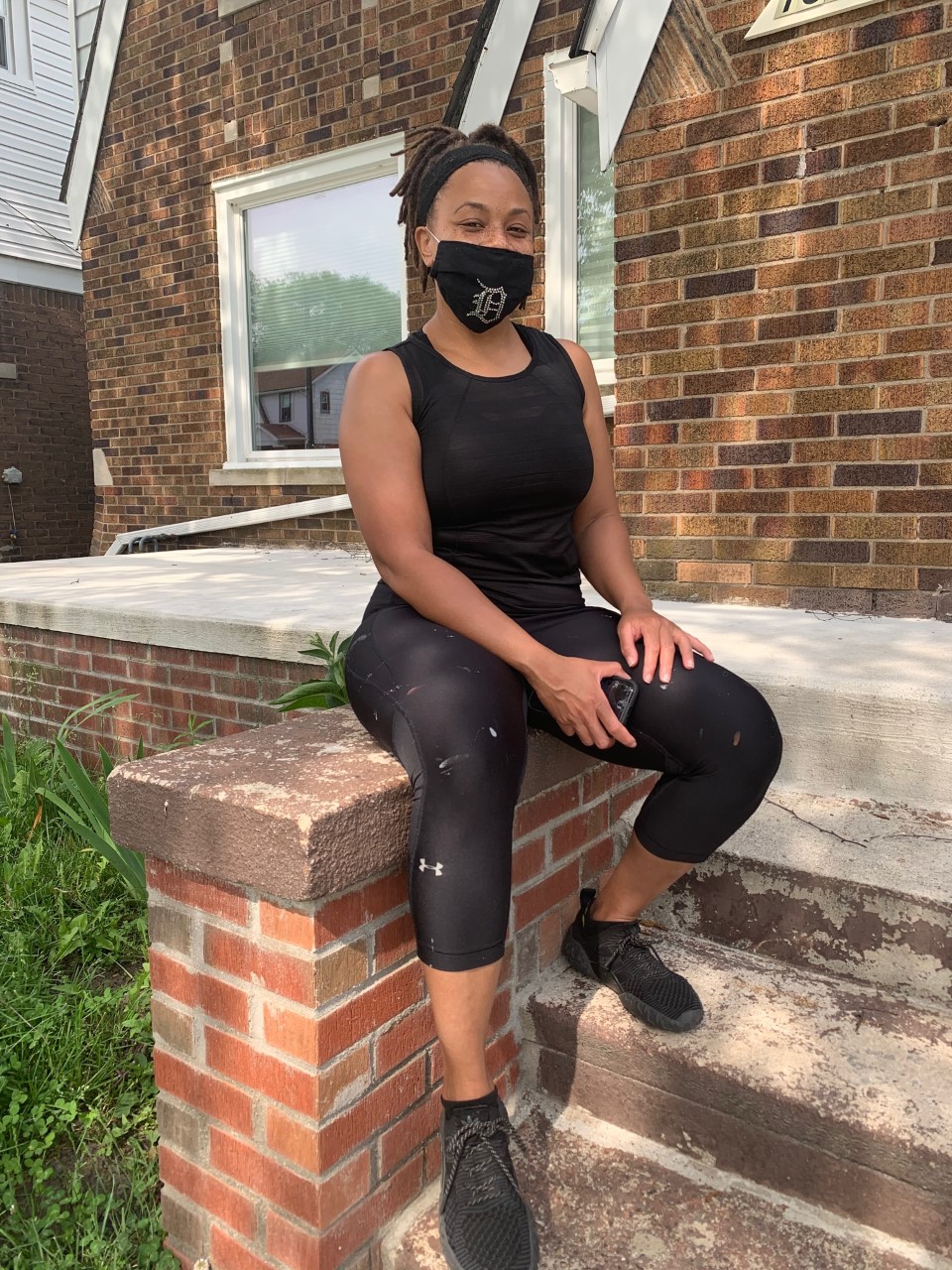
James has felt the virus close to home, too. She says she lost a close friend she’s known since high school in March. A week later, one of her cousins died. Over the next couple weeks, two more family members.
One of her older sisters survived COVID-19, but is now working her way through rehab where she is re-learning how to walk.
The fear of losing someone else to the virus was crippling for James.
“For the first month or two, I was literally afraid to wake up,” says James. “I didn’t know what phone call I was going to receive.”
While Malice Green is now immortalized on a wall in Highland Park, his family is still feeling the loss of a loved one.
James “having his picture put up again, it’s like Detroit will always remember my uncle,” says Kiersten Cheateum, Malice Green’s niece.
Cheateum lives on the city’s east side just south of 8 Mile with her mother Treise Green, Malice’s sister.
Green died 13 days before Cheateum’s 7th birthday. Even at her young age, she says she remembers the blitz of media coverage following her uncle’s death.
“Lights, cameras and action, that’s pretty much how I can sum it up,” says Cheateum. “Everybody wanted interviews. My family was harassed for a long time.”
Cheateum says that experience doesn’t wash away the memories that she holds on to of her uncle.
“I can remember my uncle like it was yesterday,” says Cheateum. “He wasn’t strict or anything. He was a great uncle. He was a hard worker. He was a father.”
Not A Day Goes By
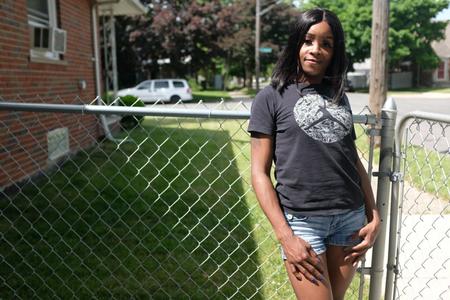
Her mother Treise was 32-years-old when her only brother died on November 5th, 1992.
She says she’ll never forget that day.
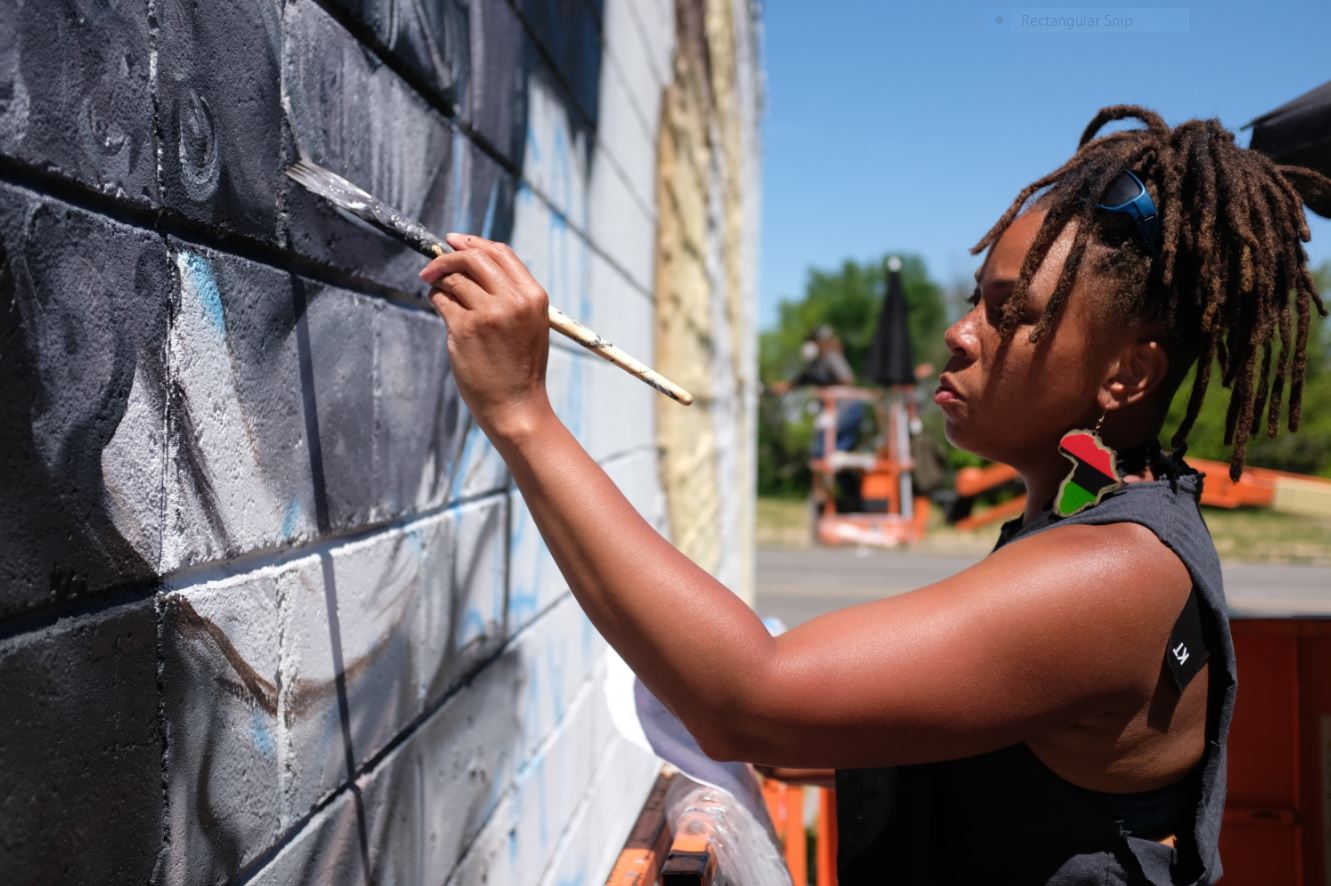
“That was several years ago. Family members have gotten older. Some of us have gotten sick. We just try to go on,” says Treise. “There’s not a day that goes by that it’s forgotten, but we kinda leave it on the back burner.”
Treise says she remembers the media coverage, too. And the nasty lawyers. And the people, she says, arriving on their doorstep, coming out of the woodwork and telling the family what to do and what to think.
But Triese says she never gave in to that overwhelming emotion of hate.
“People wanted punishment. They tried to make us feel like they felt,” says Treise. “My parents taught us to never hate anybody. I always knew that if you did wrong, God would punish you for it. I thought it was best to leave it in the Lord’s hands and let him deal with it ‘cause we are not the judge.”
Created with the blessing of his niece and sister, Sydney G. James is keeping the memory of Malice Green — and the love his family has for him — alive and well for a new generation of Detroiters to remember.
An official unveiling of the “Way Too Many” mural by Sydney G. James is scheduled for 3 p.m. to 6 p.m. on June 19th, 2020 at 16065 Hamilton Avenue in Highland Park.
Trusted, accurate, up-to-date
WDET is here to keep you informed on essential information, news and resources related to COVID-19.
This is a stressful, insecure time for many. So it’s more important than ever for you, our listeners and readers, who are able to donate to keep supporting WDET’s mission. Please make a gift today.
